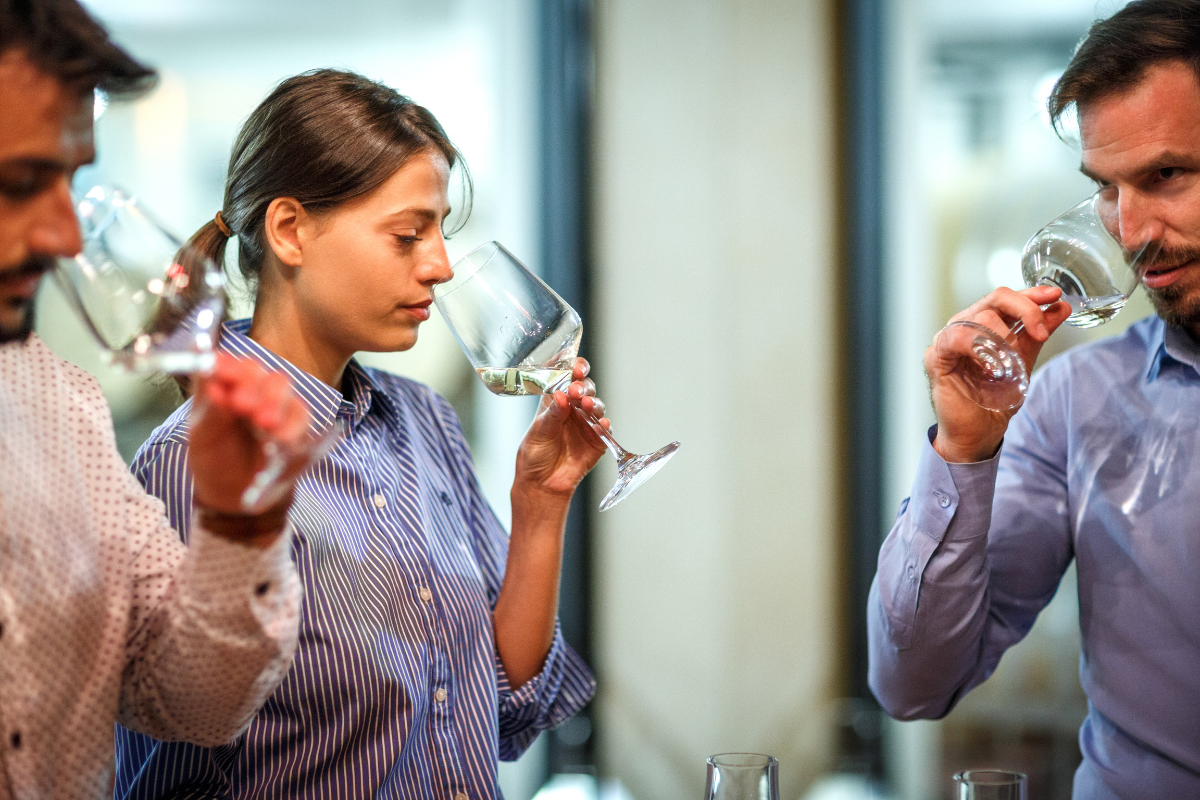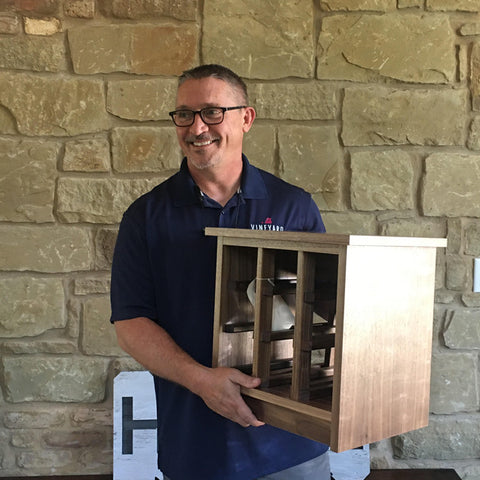Wine tasting is an intricate process that combines both art and science. It’s not just about sipping wine; it involves understanding and appreciating the sensory experiences associated with it. The skillful process of wine tasting allows enthusiasts to enjoy and discern the subtle nuances of different wines, making it a unique and enjoyable activity.
The Physiology of Taste
Our experience of tasting wine begins with our taste buds. Tiny receptors on our tongue detect the five basic tastes: sweet, sour, salty, bitter, and umami. Each area of the tongue is sensitive to different tastes. For instance, the tip of the tongue is most sensitive to sweetness, while the back detects bitterness. These taste sensations combine to create the overall flavor profile of the wine.
1. Sweetness
- Detected by: The tip of the tongue
- Caused by: Residual sugars and alcohol content in the wine
- Common in: Dessert wines, some Rieslings, and sparkling wines
- Example wines: Moscato, Sweet Riesling
2. Sourness
- Detected by: The sides of the tongue
- Caused by: Acidity in the wine
- Common in: Young white wines, light red wines
- Example wines: Sauvignon Blanc, Pinot Noir
3. Saltiness
- Detected by: The sides and the front of the tongue
- Caused by: Rare in wines but can be influenced by winemaking processes and terroir
- Common in: Certain mineral-rich white wines
- Example wines: Some French Chablis, Spanish Albariño
4. Bitterness
- Detected by: The back of the tongue
- Caused by: Tannins from grape skins, seeds, and oak barrels
- Common in: Red wines, particularly those aged in oak
- Example wines: Cabernet Sauvignon, Nebbiolo
5. Umami
- Detected by: Throughout the tongue, usually in combination with other tastes
- Caused by: Amino acids, such as glutamate, found in aged and complex wines
- Common in: Aged red wines, some Champagne
- Example wines: Aged Bordeaux, Vintage Champagne
Understanding how these basic tastes are detected and combined helps wine enthusiasts to better appreciate the complexity of different wines. Each taste contributes to the overall sensory experience, creating a unique flavor profile that can be further enhanced through mindful tasting and practice.
The Role of Aroma
Aroma plays a crucial role in wine tasting. Our sense of smell enhances our perception of flavor. When we swirl the wine in a glass, it releases aromatic compounds that we can smell. These aromas significantly influence how we perceive the taste of the wine. Common wine aromas include fruity, floral, earthy, and spicy notes, each providing hints about the wine’s character and origin.
How to Smell Wine
- Swirl the Wine: Gently swirl the wine in the glass to release its aromatic compounds.
- Take a Deep Sniff: Place your nose over the glass and take a deep sniff to capture all the aromas.
Common Wine Aromas
- Fruity: Notes like apple, berry, peach, and citrus.
- Floral: Scents of flowers such as rose, jasmine, and violet.
- Earthy: Smells reminiscent of soil, leaves, or mushrooms.
- Spicy: Hints of spices like cinnamon, clove, and pepper.
Understanding and identifying these aromas can greatly enhance your wine tasting experience, adding depth and appreciation to each sip.
The Influence of Sight
The visual aspect of wine tasting involves examining the wine’s color, clarity, and viscosity. These elements can give us insights into the wine’s quality and age. For example, a darker wine might indicate that it’s older or made from a different type of grape. Additionally, observing the wine’s clarity can help assess its condition, while the viscosity, seen through the “legs” or “tears” on the glass, can indicate alcohol content and body.
Color
Color reveals much about wine. For reds, a deep hue often indicates age or thick-skinned grapes like Cabernet Sauvignon. White wines darken with age, shifting from pale yellow to golden. Rosé wines range from light salmon to vibrant fuchsia, reflecting style and grape variety.
Clarity
Clarity refers to how clear the wine is when you look through it. A wine with good clarity will be free of cloudiness or particles, indicating it is well-made and properly filtered. Hazy wines or those with sediments might signal a fault or simply that the wine is unfiltered. Holding the glass up to a light source helps assess clarity.
Viscosity
Viscosity is observed by tilting the glass and watching how the wine flows down its sides. Wines with higher alcohol or sugar content will usually form more pronounced legs or tears. This indicates the wine’s body and richness; wines that flow quickly with thin legs are typically lighter-bodied, while those that flow slowly with thick legs are often fuller-bodied.
Recognizing these visual cues can enhance your ability to evaluate and appreciate different wines, making your wine-tasting experience more enjoyable and insightful.
The Tactile Experience
Mouthfeel, or how the wine feels in your mouth, is key in wine tasting. This includes the wine's texture and weight, adding depth to the experience. Tannins can create a dry, puckering sensation, while viscosity can make it feel rich and smooth. Some wines may also be fizzy due to carbonation, adding another dimension.
Tannins and Texture
Tannins are naturally occurring compounds in grape skins, seeds, and stems, playing a crucial role in mouthfeel. High-tannin wines often create a drying and puckering sensation on the palate. The level of tannins is influenced by grape variety and winemaking techniques. Wines with lower tannin levels feel softer and less abrasive, making them more approachable for new wine tasters.
Enhancing Your Palate
To truly appreciate wine, train your palate. Regularly tasting different wines and noting their flavors can improve your sensory skills. Focused tasting helps you become attuned to its nuances. Keeping a wine tasting journal lets you track your experiences and preferences, noting what you like or dislike about each wine.
Developing a Tasting Routine
A structured tasting routine can greatly enhance your palate. Start by examining the wine's appearance, then smell it, and finally taste it, focusing on the initial impression, mid-palate, and finish. This breaks down the process into manageable parts, making it easier to identify flavors and aromas. Over time, you’ll refine your ability to discern subtle nuances and increase your overall enjoyment of wine.
Conclusion
Wine tasting is a complex and rewarding activity involving various sensory elements. By focusing on taste, aroma, sight, and mouthfeel, you can fully appreciate each wine's intricacies. Continuous practice and mindful tasting can enhance your palate, making the experience even more enjoyable. Joining a community of wine enthusiasts can further enrich your understanding and appreciation, offering learning and discussion opportunities.




